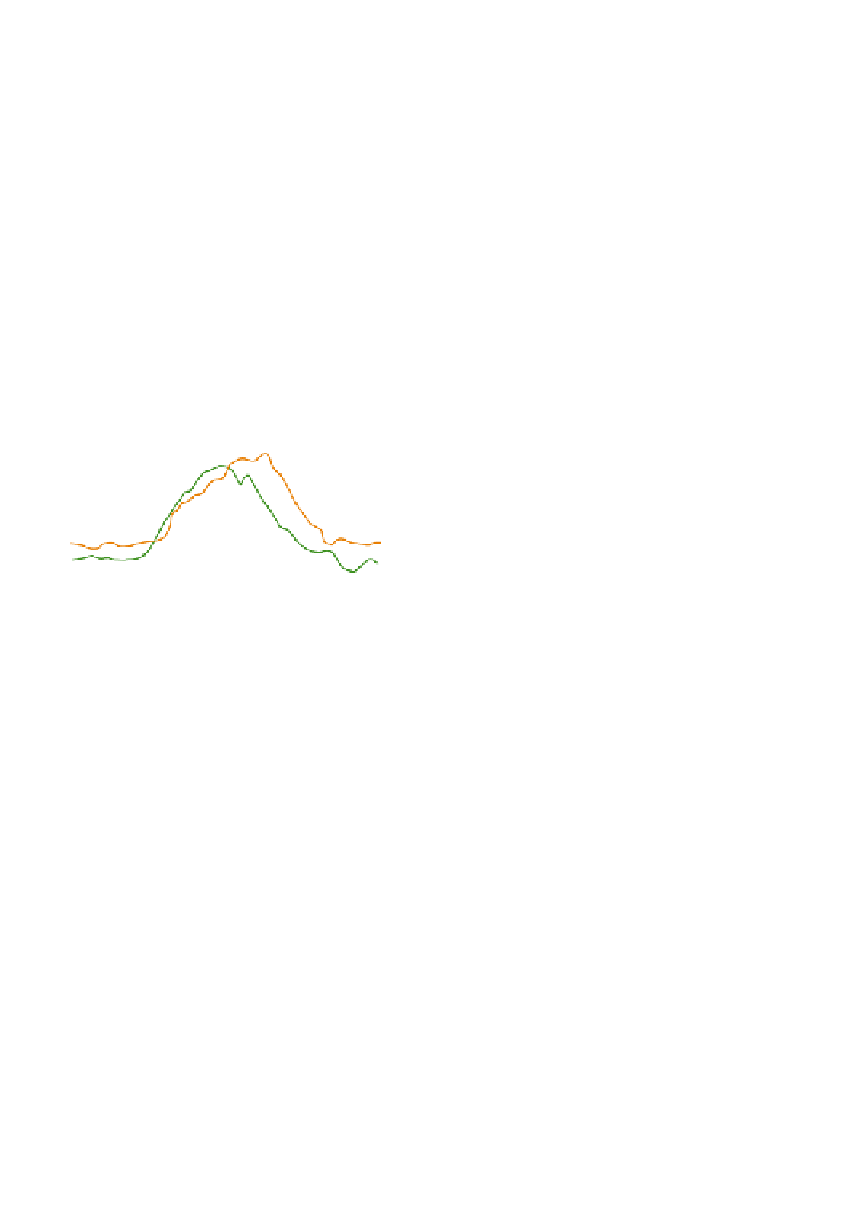Geoscience Reference
In-Depth Information
rates. Over the year, the uptake of CO
2
by
photosynthesis is balanced by its loss through
respiration. During the growing season, the
evapotranspiration rate of boreal (mainly spruce)
forests is surprisingly low (less than 2 mm per
day). The low albedo, coupled with low energy
use for evapotranspiration, leads to high avail-
able energy, high sensible heat fluxes and the
development of a deep convective planetary
boundary layer. This is particularly marked
during spring and early summer due to intense
mechanical and convective turbulence. In
autumn, in contrast, soil freezing increases its heat
capacity, leading to a lag in the climate system.
There is less available energy and the boundary
layer is shallow.
The influence of forests on precipitation is still
unresolved. This is partly due to the difficulties of
comparing rain-gauge catches in the open with
those in forests, within clearings or beneath trees.
In small clearings, low wind speeds cause little
turbulence around the opening of the gauge and
catches are generally greater than outside the
forest. In larger clearings, downdrafts are more
prevalent and consequently the precipitation
catch increases. In a 25m-high pine and beech
forest in Germany, catches in 12m diameter
clearings were 87 percent of those upwind of the
forest, but the catch rose to 105 percent in
clearings of 38m. An analysis of precipitation
records for Letzlinger Heath (Germany) before
and after afforestation suggested a mean annual
increase of 6 percent, with the greatest excesses
occurring during drier years. It seems that forests
have little effect on cyclonic rain, but they may
slightly increase orographic precipitation, by
lifting and turbulence, in the order of 1-3 percent
in temperate regions.
A more important influence of forests on
precipitation is through the direct interception of
rainfall by the canopy. This varies with crown
coverage, season and rainfall intensity. Measure-
ments in German beech forests indicate that, on
average, they intercept 43 percent of precipitation
in summer and 23 percent in winter. Pine forests
800
(A)
R
n
600
H
400
LE
200
Δ
S
0
-200
01
05
09
13
17
21
Hour
800
(B)
R
n
600
400
LE
H
200
Δ
S
0
-200
00
04
08
12
Hour
16
20
24
Figure 12.15
Energy components on a July day
in two forest stands. A: Scots and Corsican pine at
Thetford, England (52°N), on 7 July 1971. Cloud
cover was present during the period 00:00-05:00
hours. B: Douglas fir stand at Haney, British
Columbia (49°N), on 10 July 1970. Cloud cover was
present during the period 11:00-20:00 hours.
Sources: A: Data from Gay and Stewart (1974); after Oke
(1978); B: data from McNaughton and Black (1973); after Oke
(1978). By permission of Routledge and Methuen.
month except December. Tropical forests exhibit
almost complete night saturation irrespective
of elevation in the trunk space, whereas by
day humidity is inversely related to elevation.
Measurements in Amazonia show that in dry
conditions daytime specific humidity in the lower
trunk space (1.5m) is near 20g kg
-1
, compared
with 18g kg
-1
at the top of the canopy (36m).
Recent research in boreal forests shows that
they have low photosynthetic and carbon draw-
down rates, and consequently low transpiration




















































